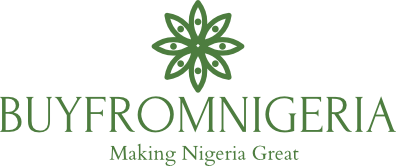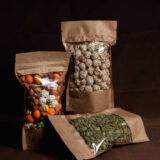Yam farming has long been an integral part of agriculture, providing sustenance and income for countless farmers around the world. However, in today’s competitive market, it’s essential to not only grow yams but also ensure profitability. Whether you’re a seasoned farmer looking to maximize your yam harvest’s financial potential or a novice venturing into yam cultivation for the first time, this blog aims to equip you with valuable strategies for making money from yam farming.
Yams are not only a staple food in many cultures but also a valuable commodity with a growing demand worldwide. From local markets to international trade, the profitability of yam farming lies in understanding the right techniques, market dynamics, and value addition opportunities. By implementing the right strategies, you can transform your yam farm into a profitable venture.
In this blog, we will explore various aspects of profitable yam farming, from selecting the right varieties to post-harvest handling and marketing. We will delve into crucial topics such as land preparation, planting techniques, crop management, and financial considerations. Additionally, we will discuss the importance of continuous learning and adaptation to stay ahead in the ever-evolving agricultural industry.
Whether you have a small plot of land or are planning to scale up your yam production, these quick tips and strategies will help you optimize your yield and increase your revenue. So, let’s dive in and uncover the secrets to a profitable yam farm!
Selecting the Right Varieties
Yam farming offers great potential for profitability, but to maximize your chances of success, it’s essential to choose the right yam varieties for cultivation. Here are some tips to help you make informed decisions when selecting yam varieties:
Researching and understanding popular yam varieties:
- Conduct thorough research on the different yam varieties available in your region or market.
- Learn about their characteristics, including yield potential, disease resistance, and market demand.
- Consider factors such as taste, texture, and cooking qualities, as these play a significant role in consumer preferences.
Identifying high-yielding and market-demand varieties:
- Look for yam varieties known for their high yields per acre or hectare.
- Consider the demand for specific yam varieties in your local market or potential export markets.
- Consult with local agricultural extension services or experienced farmers to identify popular and profitable varieties.
Considering local climate and soil conditions for optimal growth:
- Take into account the climatic conditions of your area, including temperature, rainfall, and seasonality, as different yam varieties have specific adaptability requirements.
- Assess the soil characteristics, such as fertility, drainage, and pH levels, and choose yam varieties that thrive in those conditions.
- Seek advice from agricultural experts or conduct soil tests to ensure the selected yam varieties are compatible with your farm’s soil profile.
By investing time and effort in selecting the right yam varieties, you set a solid foundation for a profitable yam farm. Remember to balance yield potential, market demand, and compatibility with local conditions. The right yam varieties can significantly impact your farm’s profitability and success in the long run.
Preparing the Farm for Yam Cultivation
A successful yam farm starts with proper preparation of the land. Here are some essential steps to follow to ensure your farm is ready for yam cultivation:
Land Selection and Preparation:
- Choose a well-drained location: Yam plants thrive in well-drained soil to prevent waterlogging, which can lead to root rot. Select a site with good drainage to avoid water accumulation.
- Sunlight exposure: Yam plants require ample sunlight for optimal growth. Pick a location that receives at least 6-8 hours of direct sunlight daily.
- Clear the land: Remove any rocks, debris, or vegetation from the designated area. This clears the way for proper planting and reduces competition for resources.
- Size of the farm: Determine the size of your farm based on the scale of your operation and market demand. Consider starting with a manageable size and gradually expanding as you gain experience.
Soil Testing and Fertility Enhancement:
- Soil testing: Conduct a soil analysis to assess its composition and nutrient levels. This information helps determine the appropriate fertilizers and amendments needed for optimal yam growth.
- pH adjustment: Yam plants prefer slightly acidic to neutral soil with a pH range of 5.5 to 7.0. If the pH is too high or low, adjust it using agricultural lime or sulfur accordingly.
- Organic matter incorporation: Improve soil fertility by adding organic matter such as compost, well-rotted manure, or cover crops. Organic matter enhances soil structure, moisture retention, and nutrient availability for yam plants.
- Nutrient balance: Based on soil test results, apply balanced fertilizers that provide essential macronutrients (nitrogen, phosphorus, and potassium) as well as micronutrients like iron, zinc, and magnesium.
Clearing and Weed Control Measures:
- Clearing the land: Remove any remaining weeds, shrubs, or grasses before planting yam. These unwanted plants can compete with yam vines for resources and hinder their growth.
- Mulching: Apply a layer of organic mulch around yam plants to suppress weed growth. Mulch also helps conserve moisture in the soil, reduces soil erosion, and moderates soil temperature.
- Manual weeding: Regularly inspect the farm for weed growth and manually remove them to prevent competition with yam plants. Be careful not to damage the shallow roots of the yam vines while weeding.
- Herbicides (if necessary): In case of heavy weed infestations, consider using herbicides. Consult with agricultural experts or extension officers to ensure safe and appropriate herbicide selection and application.
Marketing and Value Addition
Identifying target markets and potential buyers:
- Conduct market research to identify the demand for yams in your local area and beyond.
- Explore potential buyers such as wholesalers, retailers, restaurants, and processors.
- Attend local agricultural fairs or trade shows to network and connect with potential buyers.
Establishing partnerships with wholesalers, retailers, or processors:
- Build relationships with key players in the yam supply chain to ensure a consistent market.
- Collaborate with wholesalers to distribute your yams to retailers or restaurants.
- Consider partnerships with processors to add value to your yams through processing techniques.
Adding value through processing:
- Explore different processing methods to diversify your product range and increase profitability.
- Consider producing yam flour, chips, crisps, or other value-added products.
- Package and label your processed yam products attractively to enhance market appeal.
Value-added products have the potential to increase your profitability significantly. For example, producing yam flour allows you to tap into the growing gluten-free market and cater to consumers seeking healthier alternatives. Yam chips and crisps can be marketed as nutritious snacks, appealing to health-conscious individuals.
When processing yams, ensure that you maintain high-quality standards, including proper hygiene, storage, and packaging techniques. Consider obtaining the necessary certifications and licenses, if required, to comply with food safety regulations.
In addition to processing, explore marketing opportunities through online platforms and social media. Create a website or social media profiles to showcase your yam farm, share success stories, and interact with potential customers. Utilize targeted advertising strategies to reach your desired audience and build brand awareness.
Remember, successful marketing and value addition require continuous innovation and adaptation. Stay updated on consumer trends, preferences, and market demands. Seek feedback from your customers and adapt your products and marketing strategies accordingly. By investing in effective marketing and value addition, you can maximize the profitability of your yam farm and establish a strong presence in the market.
Financial Management and Cost Control

Profitability in yam farming goes beyond just producing a bountiful harvest; it also involves effective financial management and cost control. To ensure your yam farm is profitable, it’s ess
ential to have a clear understanding of your expenses, revenues, and how to optimize your resources. Here are some tips for financial management and cost control in yam farming:
Budgeting and Financial Planning:
- Develop a comprehensive budget that includes all the costs associated with yam farming, such as land preparation, seed acquisition, fertilizers, labor, equipment, and marketing expenses.
- Consider potential risks and allocate a portion of your budget for contingency measures.
- Set realistic revenue goals based on market prices and projected yields.
Tracking Expenses and Revenue:
- Keep detailed records of all your expenses, including receipts and invoices, to accurately track your costs.
- Regularly monitor your revenue by recording sales and income from your yam produce.
- Utilize digital tools or spreadsheets to organize your financial data and simplify calculations.
Evaluating Profitability and Making Adjustments:
- Calculate your farm’s profitability by deducting total expenses from total revenue.
- Identify areas where you can reduce costs without compromising the quality of your yam crop. For example, explore cost-effective alternatives for fertilizers or irrigation systems.
- Analyze the profitability of different yam varieties or cultivation techniques and focus on those that yield the highest returns.
- Regularly review your financial performance and make adjustments to your farming practices and strategies accordingly.
Seeking Financial Assistance and Grants:
- Research government programs, agricultural organizations, and financial institutions that offer grants, loans, or subsidies for yam farmers.
- Prepare a compelling business plan and explore opportunities for financial support to invest in infrastructure, equipment, or technological advancements.
Collaborating and Sharing Costs:
- Consider forming cooperatives or partnerships with other yam farmers in your area to share costs and resources.
- Pooling resources for bulk purchases of inputs, such as seeds or fertilizers, can help reduce individual costs.
Regular Market Analysis:
- Stay informed about market trends, consumer preferences, and price fluctuations for yam products.
- Identify potential market gaps or niches where you can offer unique products or cater to specific consumer demands.
- Diversify your marketing channels and explore direct sales to local markets, restaurants, or specialty stores.
Conclusion
In conclusion, yam farming can be a lucrative venture if approached strategically. By implementing these quick tips and strategies, you can set yourself on the path to a profitable yam farm. Remember, diligent planning, meticulous management, and a commitment to continuous improvement are key to long-term success in the yam farming business.












